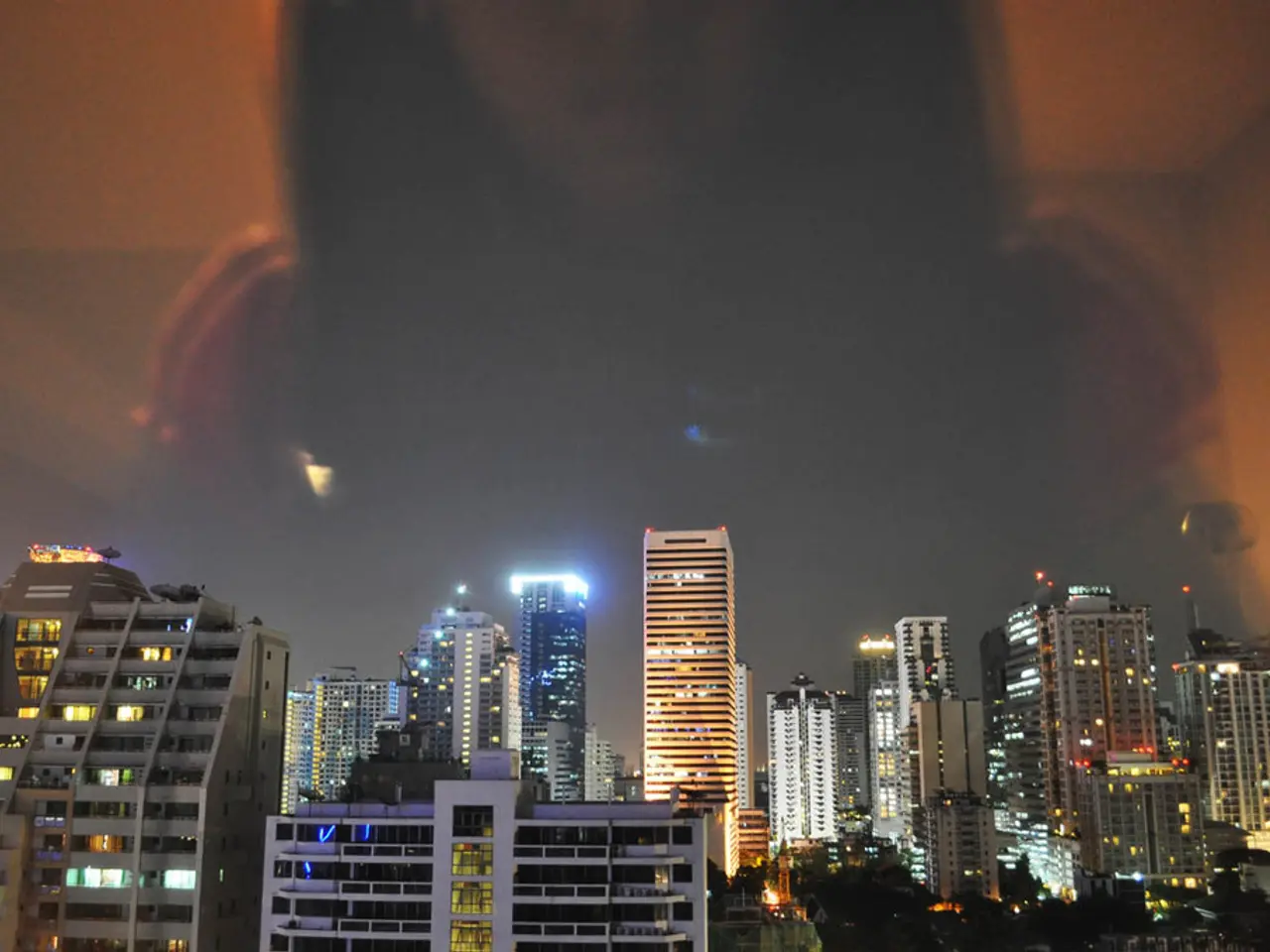Modi Set to Commission Kartavya Bhavan on August 6; Key Aspects Revealed
Kartavya Bhavan: A Green Beacon for Sustainable Governance
In the heart of New Delhi, the first completed building of the Common Central Secretariat (CCS-3), Kartavya Bhavan, stands as a testament to India's commitment to progress and sustainability. This architectural marvel, part of the revamped Kartavya Path, houses key ministries such as Home Affairs and External Affairs, and is a significant part of the Central Vista Project, launched in 2019 to modernise Lutyens' Delhi.
Kartavya Bhavan, spanning 1.5 lakh square meters, boasts a host of eco-friendly features aimed at sustainability and energy efficiency. The building's design prioritises energy conservation, with double-glazed windows reducing heat gain and noise, improving insulation. LED lighting with occupancy and daylight sensors, an Integrated Building Management System, lifts with regenerative drives, over-deck insulation, and air-insulated stone cladding limit heat penetration, collectively targeting 30% energy savings compared to earlier buildings.
The building's smart HVAC system with variable frequency drives, heat recovery, and carbon dioxide-based fresh air intake enhances efficiency and indoor air quality. Basement ventilation activates only when carbon monoxide levels exceed safe limits, minimising unnecessary energy use. A 366 KWp rooftop solar photovoltaic system is installed, expected to generate over 5.34 lakh units of electricity annually, while solar water heaters fulfill about 26-27% of daily hot water needs, reducing reliance on traditional energy sources.
Water conservation and management are also key aspects of Kartavya Bhavan's design. The building is a zero-discharge campus, treating and reusing about 1.1 million liters of wastewater daily, covering nearly 60% of its total water demand. Rainwater harvesting systems collect water for drinking and other uses. Water-saving fixtures include dual plumbing, drip irrigation for landscaping, low-flow taps, sensor-based urinals, and efficient drinking water fountains to minimise wastage.
Sustainable materials and waste management are also prioritised. The use of recycled construction and demolition waste in masonry and paving blocks, lightweight dry partitions, in-house solid waste processing, and organic waste converters promote eco-conscious waste management. Provision of electric vehicle (EV) charging stations supports green transportation, with the electric vehicle charging points in Kartavya Bhavan capable of servicing 650 vehicles a day.
Kartavya Bhavan is designed to meet GRIHA-4 Green rating standards, reflecting high benchmarks in sustainable building design and operations. The building complex, alongside CCS-1, 2, and 3, symbolises India's commitment to progress and sustainability. With an additional 200 KW of solar capacity planned for the security building's rooftop, more buildings are planned for the Common Central Secretariat in 2026, ensuring a green, efficient, and promising future of governance.
[1] India's First Green Secretariat Building to be Completed by 2023
[2] Kartavya Bhavan: A Green Building for a Sustainable Future
[3] GRIHA: Green Rating for Integrated Habitat Assessment
[4] Kartavya Bhavan: A Model for Sustainable Government Infrastructure
[5] Kartavya Bhavan: India's Greenest Government Building
[1] The Common Central Secretariat's third block, Kartavya Bhavan, is set to complete by 2023, marking India's first green secretariat.
[2] Kartavya Bhavan, in New Delhi, stands as a beacon of sustainable architecture, oriented towards a greener future.
[3] Kartavya Bhavan's design and operations align with GRIHA-4 Green rating standards, a significant achievement in sustainable building evaluations.
[4] With features such as solar energy, water conservation, and sustainable materials, Kartavya Bhavan serves as a model for sustainable government infrastructure in India.
[5] The energy-efficient and eco-friendly Kartavya Bhavan claims the title of India's greenest government building, promoting sustainable living and renewable energy within the industry.




